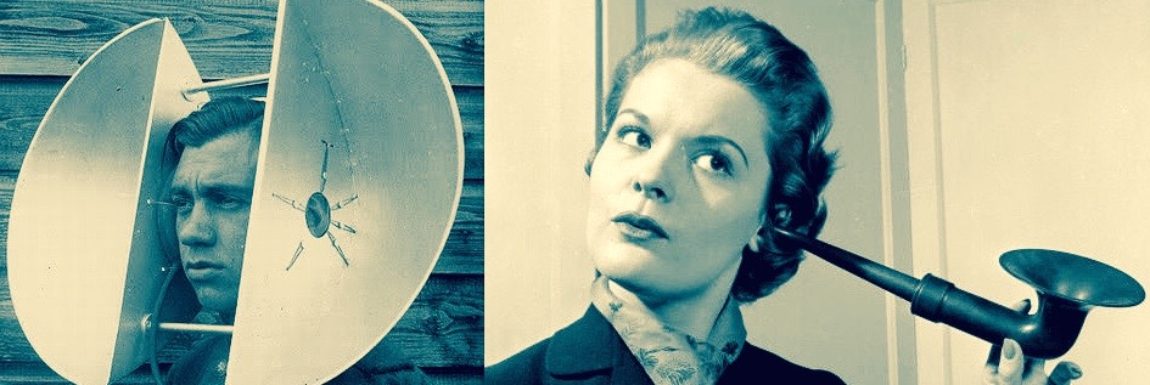There’s nothing more frustrating to me than trying to decipher speech in a place where my hearing aids are overwhelmed by the noisy hubbub in the background. A party or a crowded restaurant are two vexing examples.
I am not alone since it’s the number one complaint of hearing aid users.
The new digital hearing aids do go a long way toward addressing the problem but they are far from perfect. It appears that one of the main hurdles for manufacturers to overcome is the limitations of microphones.
Most new hearing aids sport 2 or even 3 mics. The multi-mic approach gives the processor more information and provides you with a better sense of where sound is coming from. It also helps to isolate and amplify the sounds coming from directly in front of you. That’s another reason to always face the person you are talking with.
But even the best digital processors are only as good as the information they receive from the mics. That’s why a new type of microphone being developed at Binghamton University’s Thomas J. Watson School of Engineering and Applied Science is an exciting new development.
They have just received a grant from the National Science Foundation to develop a new high performance microphone for use in hearing aids.
Here’s the press release:
Binghamton University Press Release. September 29, 2106
BINGHAMTON, NY – Scientists at Binghamton University, State University of New York want to improve sensor technology critical to billions of devices made every year. With a three-year grant from the National Science Foundation, they will start by making a high-performance sensor and applying it to hearing aids.
“This [grant] allows us to explore a new sensing mechanism that can revolutionize capacitive sensing by addressing the severe limitation of limited range of motion. This could lead to devices with better sensitivity and functionality,” said principal investigator Sherry Towfighian, an assistant professor of mechanical engineering within the Thomas J. Watson School of Engineering and Applied Science at Binghamton University.
Distinguished Professor and Chair of the Mechanical Engineering Department Ron Miles is a co-principal investigator on the project.
Capacitive sensing uses differences in electrical storage capacity of two electrodes, one fixed and one movable, to detect physical quantities. The technology can measure position, humidity, fluid levels, acceleration or noise in devices like accelerometers, gyroscopes, touchscreens, proximity sensors and microphones. The miniature sensors and devices are Micro-Electro-Mechanical Systems, or “MEMS.”
All hearing aids contain a miniature microphone (often two), a signal processor/filter to compensate for hearing loss, a small amplifier and a receiver which sends amplified sound into the ear, much like an ear bud, according to Miles.
While digital signal processing technology has produced significant performance improvements in hearing aids over the past decade, the ability to understand speech in noisy environments is still hampered by limitations in microphone technology with regard to microphone self-noise and directionality.
“This research will lead to new ways to sense sound that will overcome many performance limitations,” Miles said. “While this project uses microphones as an application area for capacitive sensing research, the intent is to overcome design constraints that plague all capacitive sensing devices.”
“MEMS microphones have the potential of providing significant performance improvements in hearing aids,” Towfighian said in the grant description. “However, they have not yet demonstrated sufficient performance for this demanding application in general. If successful, this research will lead to more sensitive MEMS microphones for hearing aids and will have a tremendous impact on the lives of hearing impaired.”

